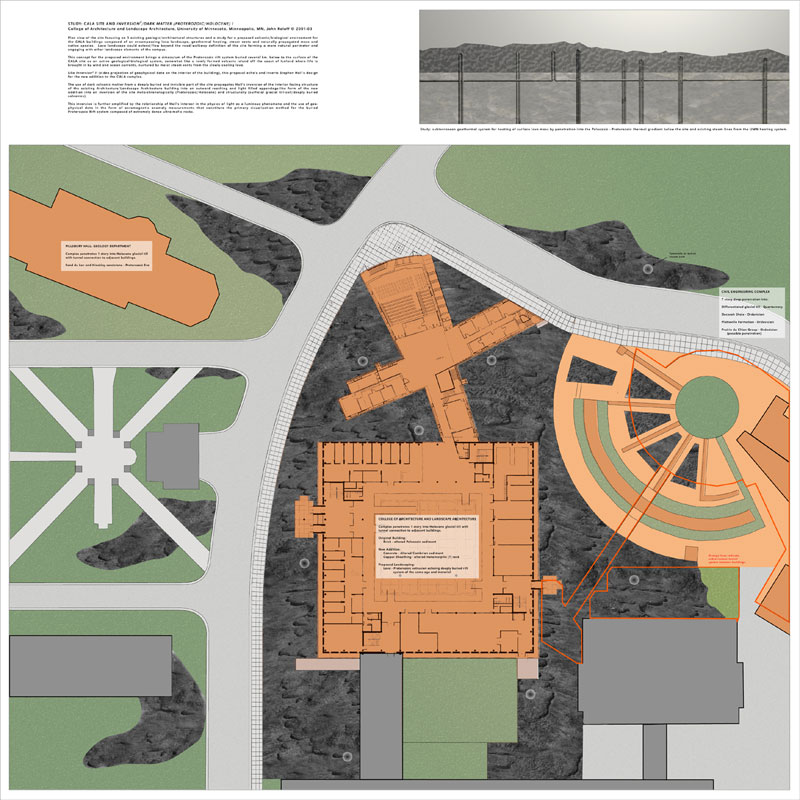Concept Stage:
College of Architecture and Landscape Architecture
University of Minnesota, Minneapolis, MN 2001-5
Study (Plan View): Inversion2:
Dark Matter (Proterozoic/Holocene) I
Plan view of the site focusing on 3 existing geologic/architectural
structures and a study for a proposed volcanic/biological environment
for the CALA buildings composed of an encompassing lava landscape,
geothermal heating, steam vents and naturally propagated moss and
native species. Lava landscape could extend/flow beyond the road/walkway
definition of the site forming a more natural perimeter and engaging
with other landscape elements of the campus.
This concept for the proposed environment brings a simaculum of the
Proterozoic rift system buried several km. below to the surface of
the CALA site as an active geological-biological system, somewhat
like a newly formed volcanic island off the coast of Iceland where
life is brought in by wind and ocean currents, nurtured by moist
steam vents from the slowly cooling lava.
Like Inversion2 II (video projection of geophysical data on the interior
of the building), this proposal echo's and inverts Stephen Holl's
design for the new addition to the CALA complex.
The use of dark volcanic matter from a deeply buried and invisible
part of the site propagates Holl's inversion of the interior facing
structure of the existing Architecture/Landscape Architecture building
into an outward reaching and light filled appendage-like form of
the new addition into an inversion of the site meta-chronologically
(Proterozoic/Holocene) and structurally (surficial glacial till-soil/deeply
buried volcanics).
This inversion is further amplified by the relationship of Holl's
interest in the physics of light as a luminous phenomena and the
use of geo-physical data in the form of aeromagnetic anomaly measurements
that constitute the primary visualization method for the buried Proterozoic
Rift system composed of extremely dense ultra-mafic rocks.
Upper Left Image:
Study - subterranean geothermal system for heating of surface lava
mass
by penetration
into the Paleozoic - Proterozoic Sthermal gradient
below the site and existing steam lines from the UMN heating system.
Research
1; Research
2; Research 3; Conceptual
1; Conceptual 2; Design
1; Design 2, Quarry 1; Quarry 2
